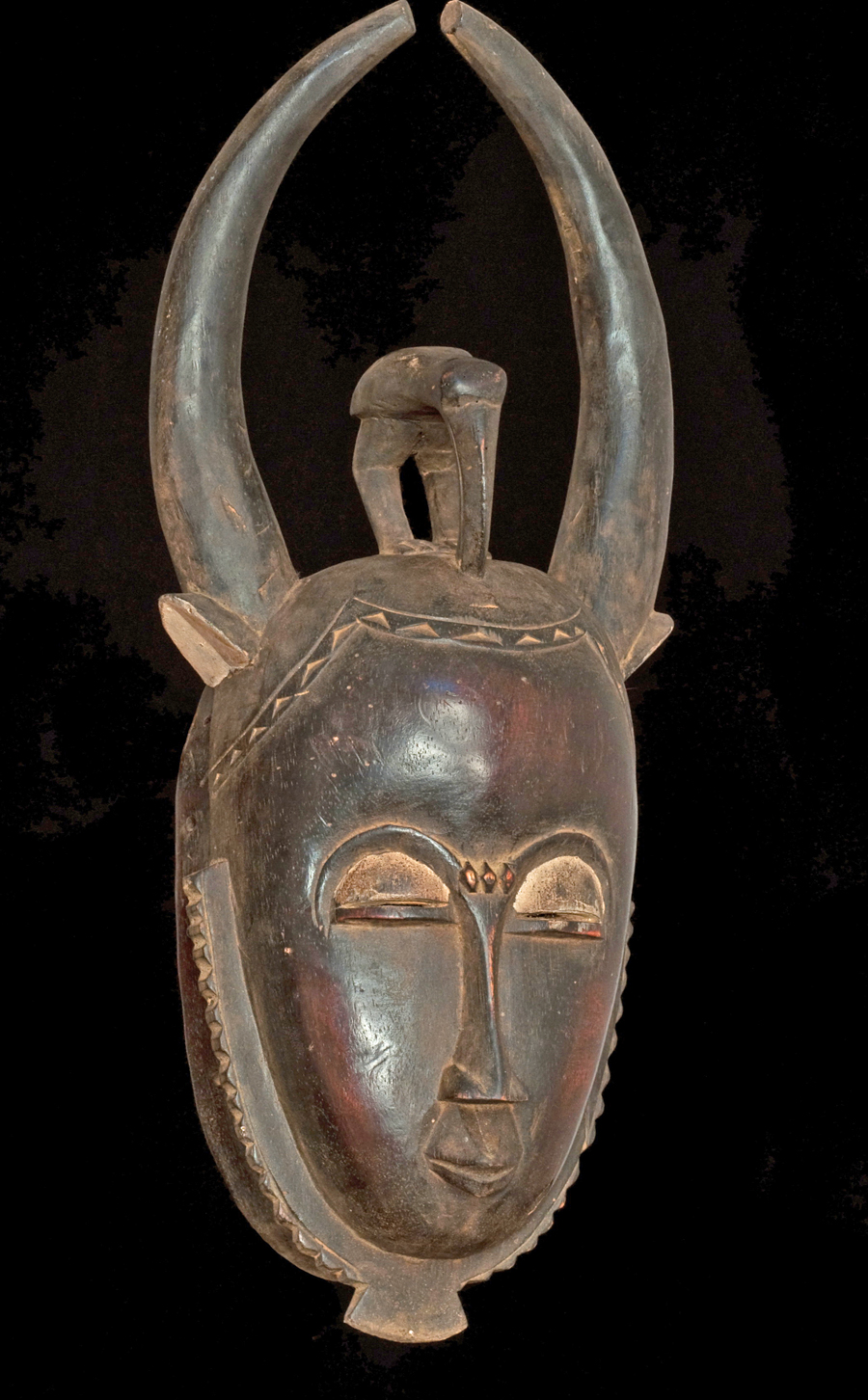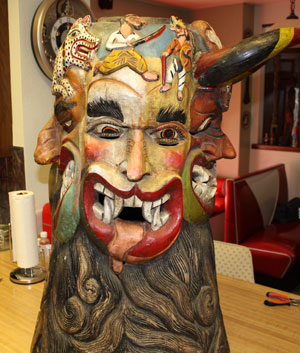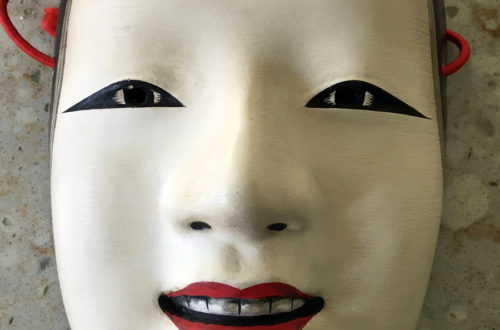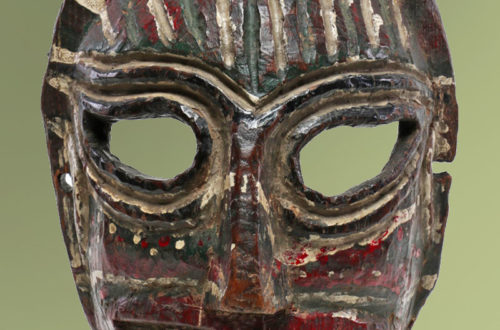 We recently posted a fully painted one which you can see by going to– https://dev.masksoftheworld.com/gu-mask-from-west-africa/ Actually, this “unpainted” one has a little white paint. It is well made and beautiful. I don’t know if this dark brown one is authentic or a reproduction. If the latter, most of us could afford it. The photo was taken by Roman Bonnefoy.
We recently posted a fully painted one which you can see by going to– https://dev.masksoftheworld.com/gu-mask-from-west-africa/ Actually, this “unpainted” one has a little white paint. It is well made and beautiful. I don’t know if this dark brown one is authentic or a reproduction. If the latter, most of us could afford it. The photo was taken by Roman Bonnefoy.
Here is some information on African masks for beginners…
Ritual and ceremonial masks are an essential feature of the traditional culture and art of the peoples of Sub-Saharan and West African. While the specific implications associated to ritual masks widely vary in different cultures, some traits are common to most African cultures: e.g., masks usually have a spiritual and religious meaning and they are used in ritual dances and social and religious events, and a special status is attributed to the artists that create masks and to those that wear them in ceremonies. In most cases, mask-making is an art that is passed on from father to son, along with the knowledge of the symbolic meanings conveyed by such masks.
Masks are one of the elements of African art that have most evidently influenced European and Western art in general; in the 20th century, artistic movements such as cubism and expressionism have often taken inspiration from the vast and diverse heritage of African masks Influences of this heritage can also be found in other traditions such as South and Central American masked Carnival parades.
In most traditional African cultures, the person who wears a ritual mask conceptually loses his or her human identity and turns into the spirit represented by the mask itself.This transformation of the mask wearer into a spirit usually relies on other practices, such as specific types of music and dance, or ritual costumes that contribute to conceal the mask-wearer’s human identity. The mask wearer thus becomes a sort of medium that allows for a dialogue between the community and the spirits (usually those of the dead or nature-related spirits). Masked dances are a part of most traditional African ceremonies related to weddings, initiation rites and so on.
African mask are usually shaped after a human face or some animal’s muzzle, albeit rendered in a sometimes highly abstract form. The inherent lack of realism in African masks (and African art in general) is justified by the fact that most African cultures clearly distinguish the essence of a subject from its looks, the former, rather than the latter, being the actual subject of artistic representation.





